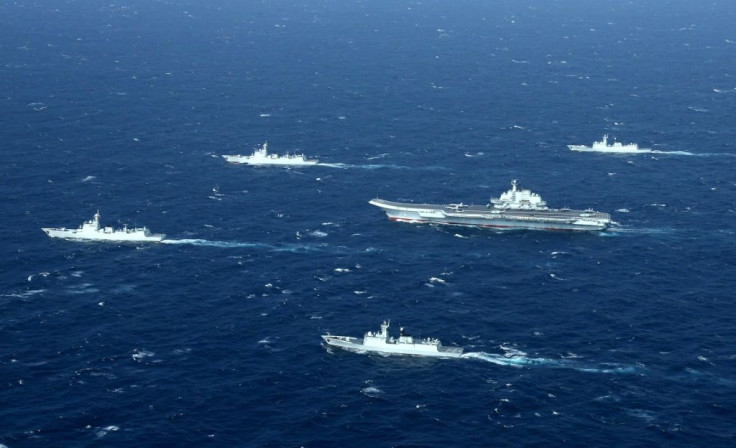China's Experimental Mini-Carrier Prepares PLA Navy For Drone Swarm Attack Over Taiwan
KEY POINTS
- Chinese President Xi Jinping told PLA to "strengthen military training"
- The catamaran drone carrier is part of an experimental naval training force
- PLA could use the catamaran drone carrying vessel as a naval asset
A Chinese experimental catamaran mini-carrier for drones launched in May 2021 appears to be helping the PLA Navy to prepare itself for future scenarios of warfare, including a U.S. attack by drone swarms and cruise missile strikes in a war over Taiwan.
Footage of a PLA Navy training activity appeared on Chinese state television CCTV-7 Thursday. The visuals showed the unusual catamaran drone carrier in service as part of an experimental naval training force, War Zone reported Thursday.
The training and preparation for war could prove crucial for the Chinese military with Pentagon-sponsored war games and simulation exercises indicating that networked swarms of drones with electronic warfare packages, high autonomy, and other capabilities could play a decisive role in a conflict with Beijing over Taiwan.
The catamaran mini-carrier provides a platform to simulate drone swarms, cruise missile strikes, and large-scale electronic warfare attacks - all at low cost. This will provide the PLA navy with the capabilities to train and evaluate countermeasures in the scenario of such an attack, according to the War Zone report.
It also means that the PLA could use the catamaran drone-carrying vessel or similar training barges, or other maritime platforms as naval assets, in a future conflict scenario.
In emerging warfare techniques, networked drone swarms are expected to play a dominant role with several state and non-state actors having access to such technology. For instance, in 2017, the U.S. carried out trials with 103 'Perdix Quadcopter Drones' functioning as a swarm.
China has also been in the process of developing similar technology. In September 2020, China conducted a test deploying a swarm of loitering munitions or suicide drones from a box-like array of tubular launchers mounted on a light tactical vehicle and from helicopters.
Further accelerating technological development, China launched in May what it claimed to be the world's first drone carrier capable of using AI technology and unmanned operation.
This comes at a time when Beijing has undertaken a rapid military modernization program along with its aggressive posturing toward Taiwan and the South China Sea region.
Along with using state-funded large civilian fishing vessels to exert its dominance over the wider South China Sea region, the Chinese military has also expanded its training operations by testing various scenarios that replicate and learn from advanced enemy capabilities.
PLA submarines have been using their routine encounters with the U.S. Navy, allied warships, and military aircraft in the South China Sea region to test and enhance their combat capabilities under real conditions.
In November, Chinese President Xi Jinping told the PLA to "focus all its energy on fighting" and preparation for war, as per The Guardian. Alerting about "dangerous storms" on the horizon, Xi also told his army to "comprehensively strengthen military training in preparation for war."

© Copyright IBTimes 2025. All rights reserved.






















